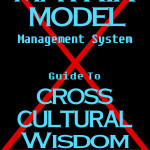As a professional who has worked in the D&I field for 25 years, I am seeing some significant emerging trends in the workplace. As a result of an improving economy, previously slashed HR budgets are finally being revitalized with attention being paid to training and development – especially for diversity and inclusion. In addition, as the labor market continues to improve, more employers are talking about becoming an “employer of choice” and strengthening their programs and employee relationships. The days of employers feeling their staff should “just be happy to have a job” are increasingly behind us as the market shifts in favor of employees. Savvy employers who value diversity, widen their recruiting net and retain talent by implementing inclusive programs will win the war for new talent. The newest generation entering the workforce is more diverse than ever and the generation behind it will produce an even more diverse “wave” of new hires. Status quo is no longer applicable.
Continue reading Emerging Trends in D&I – By Mauricio A. Velásquez


